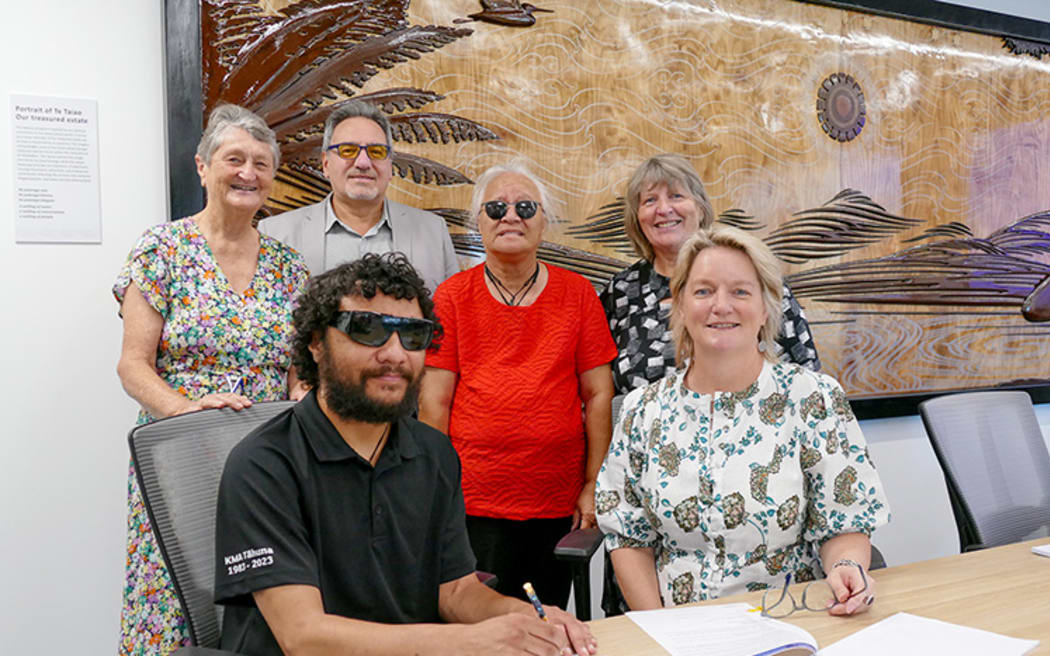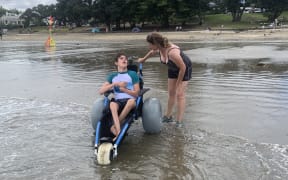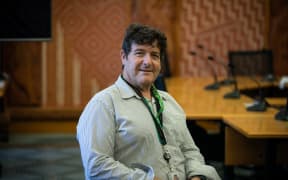
Whakatāne Accessible and Inclusive Trust member Grant Chase and Whakatāne District Council chief executive Steph O'Sullivan sign the Memorandum of Understanding with Ruth Gerzon, Mayor Victor Luca, Nancy Walker and the council's senior community development advisor Karen Summerhays in attendance. Photo: Supplied / Whakatāne District Council
A new agreement between a disability advocacy group and Whakatāne's council aims to make the district safer and more accessible.
Whakatāne Accessible and Inclusive Trust (WAI) signed a Memorandum of Understanding with Whakatāne District Council last week.
The group has previously been instrumental in the council making improvements to footpaths, kerbs and crossings in key areas around Whakatāne.
It also has the town's controversial red courtesy crossings, which they consider dangerous for people with disabilities, in their sights for future improvements.

The Memorandum of Understanding commits the council to develop a Diversity and Inclusion Policy. A paper on the development of that policy will be presented at an upcoming Living Together Committee meeting.
At a meeting of the council's Living Together Committee on Tuesday, the councillors and mayor accepted a report on the MOU and the agreement was afterwards signed by the council's chief executive Steph O'Sullivan and WAI member Grant Chase.
The MOU would provide council staff and trust members with guidelines for engagement and aimed to enable the ethos of "nothing about us without us", one of the key principles of the trust.
"While there are other groups and organisations that work and advocate on behalf of people with disability, for example, Disability Resource Centre and Hearing Support BOP, WAI is unique in that the members are predominately those with lived experience of living with a disability. This provides the council access to specialised advice," the report said.
The council's senior community development advisor Karen Summerhays said it had been "a real pleasure to work with the members of WAI to develop this way of working".
"I would like to acknowledge the persistence and patience of the group to get this across the line. We're fortunate to have guidance from such a passionate and knowledgeable group."
Ruth Gerzon also addressed the committee, saying the group had been working with the council over the past few years.
"Some of our ideas have already come to fruition."
A submission to the council in 2018 advocated for safer kerbs and crossing places and ways for people in mobility scooters and wheelchairs to travel past schools, through Kopeopeo and into town.
"Those recommendations have come to fruition this year and we are very pleased," Gerzon said.
Currently, the group was supporting the emergency planning work to ensure disable people are catered for when there is a tsunami evacuation.
Asked what other projects were in the group's sights, Gerzon said one of the group's serious concerns - particularly with those who were visually impaired - was the red courtesy crossings which did not comply with the guidelines of New Zealand Transport Authority Waka Kotahi.
"According to NZTA they should only be in areas where there is a 30km/h limit and there needs to be speed humps. We're very concerned about some of them because they rely on people catching the eye of the person who's driving. If you're visually impaired, that's not possible."
The group would be making a submission to the Long-term Plan 2024-34 on the issue.
LDR is local body journalism co-funded by RNZ and NZ On Air.





